A Tribute to Duane Allman's Genius and Signature Guitar Style
An examination of some of the key elements of Duane's lead guitar playing.
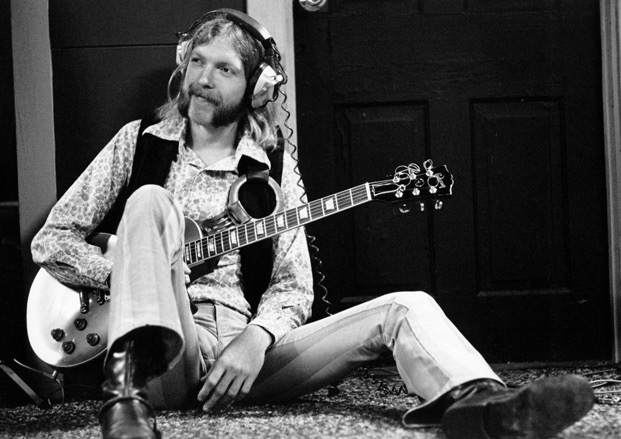
In this edition of In Deep, we will examine some of the key elements of Duane Allman’s signature style as a lead guitarist.
One of the best examples of the genius of Duane Allman can be found on the timeless, classic live album, At Fillmore East (1971), which captures the Allman Brothers Band live in concert at the peak of their powers.
Duane’s razor-sharp articulation and masterful touch abound, starting with the slide guitar tour de force “Statesboro Blues,” through the smoldering slow blues “Stormy Monday” and continuing through the fiery, aggressive solos performed on “Whipping Post,” “You Don’t Love Me” and other great tracks.
Duane’s rich, warm tone was achieved via his main ax, a 1958 tobacco sunburst Gibson Les Paul Standard, played through Marshall “Plexi” 50- and 100-watt heads, usually running two 4x12 Marshall bottoms.
For additional distortion, he very occasionally used a Dallas-Arbiter Fuzz Face, usually in the studio. A key to Duane’s virtuosity was the fact that, like Jimi Hendrix, he had extensive experience as a session guitarist, working closely alongside R&B greats like Wilson Pickett, Aretha Franklin and King Curtis.
Through his studio work, Duane had developed a great sense of rhythm as well as a keen understanding of economy, in terms of phrasing. This understanding resulted in improvised solos that remained cohesive and conversational no matter how long they stretched out or how far they roamed from the original starting point.
For this column, let’s use two of Duane’s signature songs, “Stormy Monday” and “Whipping Post,” as our points of focus. “Stormy Monday,” written and originally recorded by blues great T-Bone Walker, is played in the key of G. For soloing, Duane relied primarily on a few standard “blues-approved” scales. FIGURE 1 illustrates a scale most guitar players are well familiar with, G minor pentatonic (G Bb C D F), as played in third position.
FIGURE 2 illustrates the G blues scale, which is the same as G minor pentatonic but additionally includes the flatted fifth (b5), Db. Most blues players move alternately between minor and major pentatonic scales based on the same root note. Eric Clapton and B.B. King are two great examples of guitarists whose solos are almost always based on a combination of these two scales.
FIGURE 3 illustrates the G major pentatonic scale (G A B D E) in an extended pattern that diagonally traverses the fretboard from third to 12th positions. Duane often used a soloing device that can be traced to B.B. King, one of his biggest influences. King’s signature soloing approach combines the notes of minor and major pentatonic scales in a very specific fretboard pattern, or “shape.” The pattern, known as “B.B.’s box,” is illustrated in FIGURE 4.
This small handful of notes can be ordered and phrased in nearly an infinite number of ways, resulting in many great blues licks. FIGURES 5–8 offer four different ways in which Duane would use this shape as a jumping off point to improvised solo ideas.
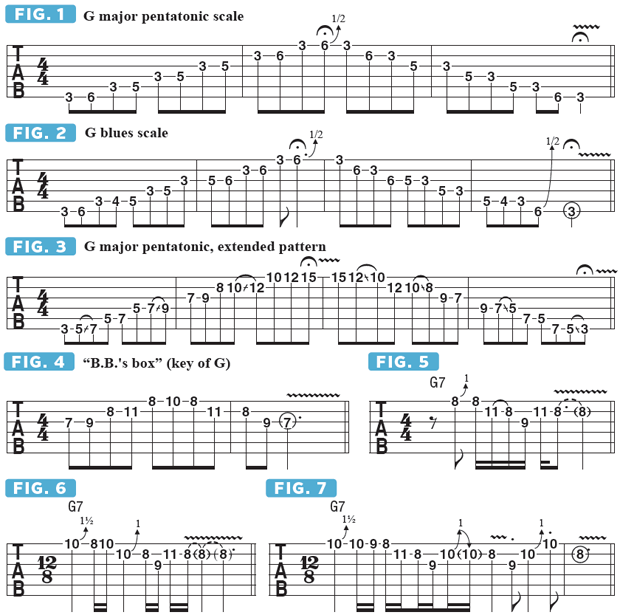
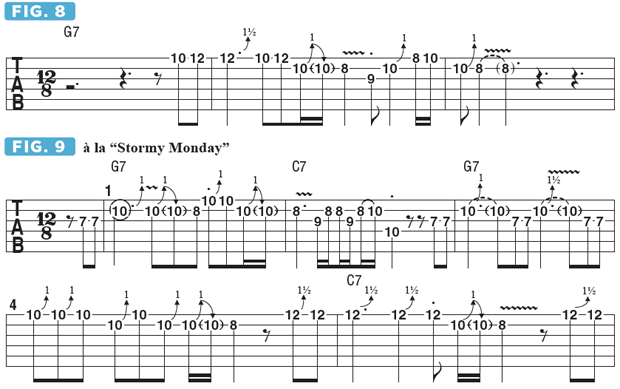
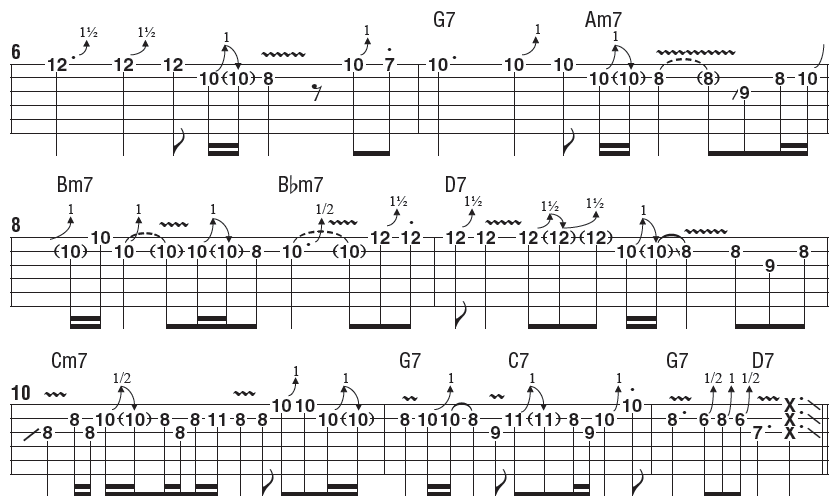
PART ONE OF THREE
Now let’s focus on soloing over a 12-bar slow blues form along the lines of “Stormy Monday” and in the style of Duane Allman, as illustrated in FIGURE 9.
I begin in bars 1 and 2 with a melodic idea based on G major pentatonic, but in bar 3, I morph into G minor pentatonic by overbending the second, A, up and step and a half to the fourth, C. At the end of bar 4 into bar 5, I apply the overbending technique to E, the sixth, bending that note all the way up to the G root note, repeating the melodic motif into bar 6.
When performing these bends, line up additional fingers behind the fretting finger—for example, reinforcing the ring finger with the middle finger or both the middle and index—to help it push the string. Doing so will give you better pitch control and stability when bending. The same is true for bend vibratos. Throughout the remainder of the example, I limit my movement to the eighth and 10th positions to demonstrate that a great amount of melodic invention can be found without moving up and down the fretboard.
The intent here is to create lines that are expressive and vocal-like while also evoking a bit of the Duane-like focused intensity. For his “Whipping Post” solo, Duane drew primarily from the A Dorian mode (A B C D E F# G), two fretboard patterns of which are shown in FIGURES 10 and 11. Both patterns are very useful for soloing, so you’ll want to memorize them thoroughly.
FIGURE 12 offers an eight-bar solo along the lines of Duane’s “Whipping Post” solo. The song is played in 12/8 meter, which affords a lot of room for rhythmic creativity, and Duane made the most of the opportunity every time he played it. I begin this solo with a whole-step bend from the A root up to the second, B, followed by subtle movement down through the notes of the A Dorian mode. In bar 2, I play a quick repeated hammer/pull phrase that emphasizes two notes of a G major triad (G and B) before moving into a line based on A minor pentatonic (A C D E G).
Bar 5 offers a unique rhythmic superimposition that Duane used often. Another classic Duane-ism is illustrated in bar 7, as quick pull-offs on the top three strings alternate back and forth in an ascending-and-descending manner. Try using your index and ring fingers to execute this phrase as well as your index and middle fingers and index and pinkie, or a combination of any of these. The aim should be, as always, clarity in execution.
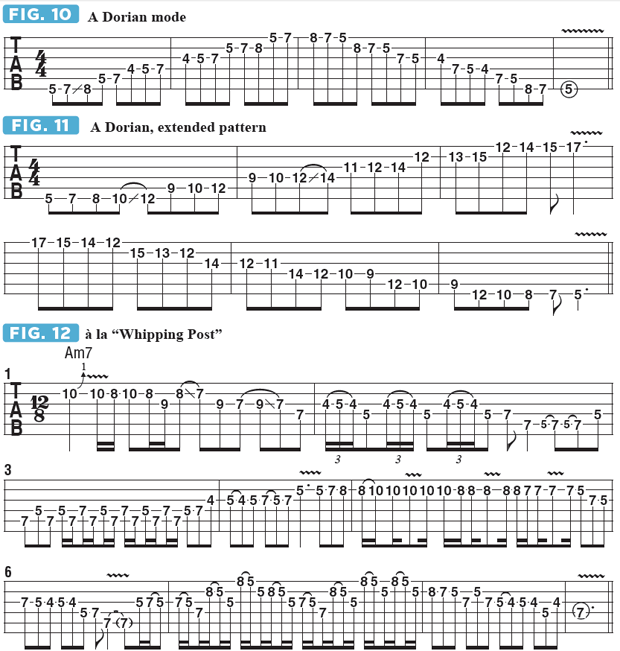
PART TWO
PART THREE
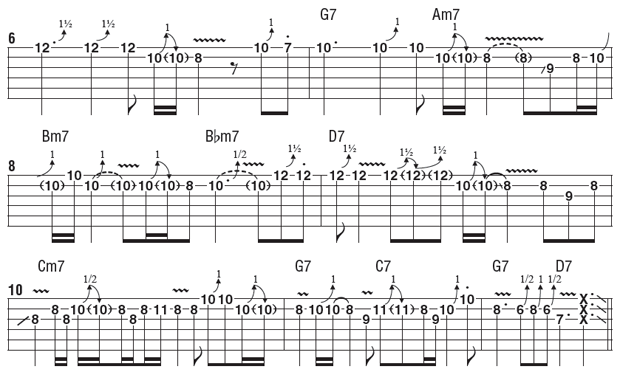
Get The Pick Newsletter
All the latest guitar news, interviews, lessons, reviews, deals and more, direct to your inbox!
Guitar World Associate Editor Andy Aledort is recognized worldwide for his vast contributions to guitar instruction, via his many best-selling instructional DVDs, transcription books and online lessons. Andy is a regular contributor to Guitar World and Truefire, and has toured with Dickey Betts of the Allman Brothers, as well as participating in several Jimi Hendrix Tribute Tours.
“There are so many sounds to be discovered when you get away from using a pick”: Jared James Nichols shows you how to add “snap, crackle and pop” to your playing with banjo rolls and string snaps
Don't let chord inversions bamboozle you. It's simply the case of shuffling the notes around








![Joe Bonamassa [left] wears a deep blue suit and polka-dotted shirt and plays his green refin Strat; the late Irish blues legend Rory Gallagher [right] screams and inflicts some punishment on his heavily worn number one Stratocaster.](https://cdn.mos.cms.futurecdn.net/cw28h7UBcTVfTLs7p7eiLe.jpg)


